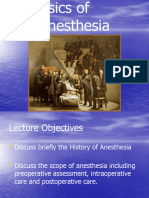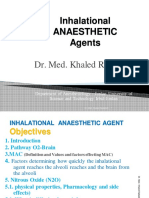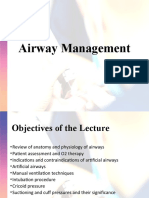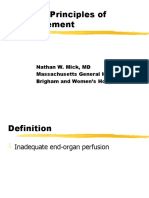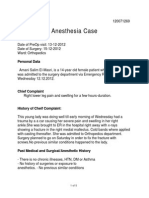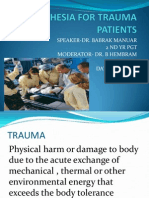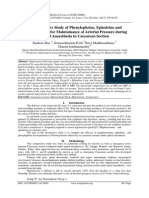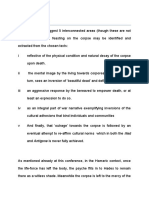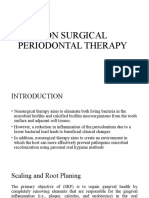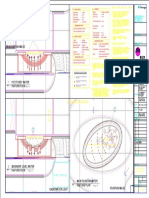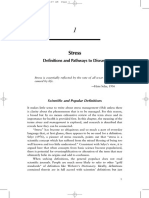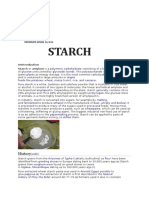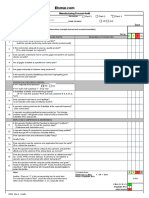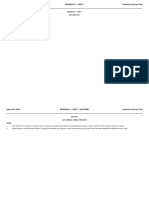0% found this document useful (0 votes)
273 views17 pagesGeneral Anesthesia
This document provides an overview of general anesthetic agents including:
- The definition, objectives, and features of general anesthesia. It produces a reversible loss of consciousness and sensations.
- The mechanisms of action involve depressing the central nervous system through various molecular targets in the brain and spinal cord.
- The four stages of anesthesia from initial analgesia to medullary paralysis if too much medication is given.
- The pharmacokinetics of inhalational agents which are highly soluble and diffuse rapidly through the lungs before reaching the brain.
- The major classifications of anesthetic agents including inhalational gases/vapors and intravenous induction and maintenance medications.
- Brief descriptions of some
Uploaded by
39 Nayan BhagatCopyright
© © All Rights Reserved
We take content rights seriously. If you suspect this is your content, claim it here.
Available Formats
Download as PDF, TXT or read online on Scribd
0% found this document useful (0 votes)
273 views17 pagesGeneral Anesthesia
This document provides an overview of general anesthetic agents including:
- The definition, objectives, and features of general anesthesia. It produces a reversible loss of consciousness and sensations.
- The mechanisms of action involve depressing the central nervous system through various molecular targets in the brain and spinal cord.
- The four stages of anesthesia from initial analgesia to medullary paralysis if too much medication is given.
- The pharmacokinetics of inhalational agents which are highly soluble and diffuse rapidly through the lungs before reaching the brain.
- The major classifications of anesthetic agents including inhalational gases/vapors and intravenous induction and maintenance medications.
- Brief descriptions of some
Uploaded by
39 Nayan BhagatCopyright
© © All Rights Reserved
We take content rights seriously. If you suspect this is your content, claim it here.
Available Formats
Download as PDF, TXT or read online on Scribd
/ 17








